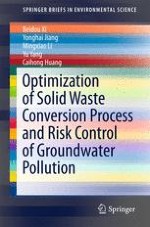This book focuses on the treatment and disposal technology used for solid waste in China, puts forward an optimal management scheme that takes into account the complete lifecycle, and introduces a new technical model that reflects the synergies of resource utilization and secondary pollution control. In addition, it provides a set of methods for professional on-site investigation, risk assessment, classification management and control to minimize the risk of groundwater contamination by solid waste at landfill. Given the extent and depth of knowledge and experience gathered in the book, it offers an important reference guide for government managers, environmental researchers, and all those involved in and concerned about solid waste disposal.
